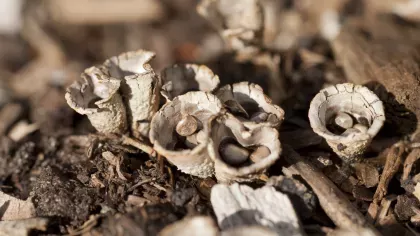Plant-fungal interactions in Alpine ecosystems
Investigating fungal mycorrhizas and their plant hosts across elevational and latitudinal gradients in Alpine ecosystems: diversity, environmental drivers and threats.

Importance of plant-fungal interactions in Alpine ecosystems
Alpine plant and fungal communities are models for understanding pioneer communities, the primary components of resilient ecosystems. Climate change is one of the biggest threats to organismal and functional diversity, yet little is known about its potential impacts on fungal-plant interactions. In alpine habitats, ectomycorrhizal (ECM) fungi are an essential functional guild, as they are the main mutualists of the dominant woody perennial vegetation and play a fundamental role in carbon and nutrient cycling. Ectomycorrhizal fungi are required for the establishment of pioneer trees after environmental perturbations and therefore perform a key function in ecosystem resilience. Yet, despite their importance, alpine mycorrhizal fungi are poorly known and the majority remain undocumented and undescribed; baseline diversity data on these fungal communities and their environmental drivers is needed in the face of future climate changes.
Main research questions
- Does the diversity of ECM fungi associated with the roots of alpine plants vary across elevation and latitudinal gradients, as is the case for other organisms?
- What are the main biotic and abiotic factors that affect the ECM community composition and structure associated with alpine plants?
- Are the genotypes of alpine plant species linked to variation in their mycorrhizal communities?
- What are the main threats for these plants and their associated fungi?
- Are there sets of mycorrhizal species and/or species assemblages unique to alpine environments?
Methodology
We will sample ECM communities in roots and in soil (potential inoculum) from four alpine ECM plant species with different distribution patterns across the European Alps: Salix herbacea, Dryas octopetala, Betula nana and Bistorta vivipara. These will be sampled at different elevations in six countries in the Alps. We will also sample the ECM communities associated with B. nana and B. pendula at different elevation ranges. Where both species co-occur (hybrid zone), we will sample roots from both the parents and the hybrids and collect leaf material for genetic analyses. We will complement our root surveys with the collection of fruiting bodies and related specimens from Kew's Fungarium to help with the identification of the mycorrhizal roots.
Objectives
- Study the community composition and structure of mycorrhizal fungi associated with four alpine plants (Betula nana, Dryas octopetala, Salix herbacea and Bistorta vivipara) with different distribution patterns along elevation gradients in the Alps across six European countries.
- Investigate the effect of biotic (e.g. host identity, genetic variability and distribution) and abiotic (e.g. elevation, plant and soil chemistry) factors on their diversity and distribution.
- Study the ECM communities associated with Betula pendula and its hybrids with B. nana.
- Provision of baseline fungal diversity and distribution data in Alpine ecosystems.
- Identification of the drivers of ECM community assemblages across elevation and latitudinal gradients.
- Publically available DNA barcoding library for Alpine fungi.
- Identification of species or species assemblages of conservation concerns.
- Training of a PhD student.
UK
- Martin I. Bidartondo, Imperial College London
International
- Swiss Federal Research Institute WSL, Switzerland
- University of Vienna, Austria
- Mycology Center Innsbruck, Austria
Clarkson, J.J., Pennington, T.D., Haynes, G., Engstrand, R., Kaye, M., & Chase, M.W. (2013)
A phylogenetic analysis of Guarea (Meliaceae) Pp. 180-189 in: Pennington, T.D., & Clarkson, J.J., (eds), A revision of Guarea (Meliaceae)
Cambridge University Press, Cambridge
Liimatainen, K., Niskanen, T., Dima, B., Kytövuori, I., Ammirati, J.F. & Frøslev, T. (2014)
The largest type study of Agaricales species to date: bringing identification and nomenclature of Phlegmacium (Cortinarius) into the DNA era
Persoonia 33: 98–140. DOI: 10.3767/003158514X684681
Suz, L.M., Barsoum, N., Benham, S., Dietrich, H.P., Fetzer, K.D., Fischer, R., García, P., Gehrman, J., Kristöfel, F., Manninger, M., Neagu, S., Nicolas, M., Oldenburger, J., Raspe, S., Sánchez, G., Schröck, H.W., Schubert, A., Verheyen, K., Verstraeten, A. & Bidartondo, M.I. (2014)
Environmental drivers of ectomycorrhizal communities in Europe's temperate oak forests
Molecular Ecology 23(22): 5628-5644
Suz L.M., Barsoum, N., Benham, S., Cheffings, C., Cox, F., Hackett, L., Jones, A.G., Mueller, G.M., Orme, D., Seidling, W., Van der Linde, S. & Bidartondo M.I. (2015)
Monitoring ectomycorrhizal fungi at large scales for science, forest management, fungal conservation and environmental policy
Annals of Forest Science 72(7): 877-885. DOI 10.1007/s13595-014-0447-4
